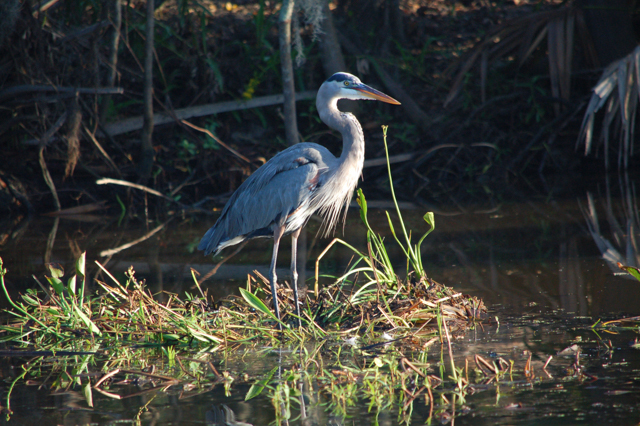Bear Point Bayou Adds Unique Features to USM’s Gulf Park Campus
Wed, 04/12/2023 - 10:07am | By: Gabriela Shinskie
When you walk through the beautiful University of Southern Mississippi’s (USM) Gulf Park Campus in Long Beach, you may stumble upon Bear Point Bayou. This body of water is home to many plants and animals, not to mention its rich history to the area.
If you look closer, you may see bluegill sunfish, bass, and catfish. Frogs, including treefrogs, bullfrogs and several toad species can also be found around the bayou. Many turtles also find Bear Point Bayou their home including red-eared sliders, yellow-bellied sliders, and the Gulf Coast spiny softshell turtle.
Robert Turnbull is a lecturer at USM’s School of Coastal Resilience. His expertise is in animal behavior and describes the bayou as full of wildlife.
 “Birds seen around the bayou include great blue herons, green herons and even a bald
eagle has been seen flying over campus,” said Turnbull. “Mammals include possums,
raccoons, foxes, bobcats, and coyotes. This is just a partial list as many more animals
are a part of this ecosystem.”
“Birds seen around the bayou include great blue herons, green herons and even a bald
eagle has been seen flying over campus,” said Turnbull. “Mammals include possums,
raccoons, foxes, bobcats, and coyotes. This is just a partial list as many more animals
are a part of this ecosystem.”
Although the rich life of Bear Point Bayou is clearly shown, nothing compares to its rich history
Dr. Jennifer Walker is the Associate Dean of Coastal Operations and an Associate Professor of Biological Sciences at USM’s Gulf Park Campus. Walker said the name Bear Bayou is found on a British map and land records dating back to 1774.
“According to the historical marker, Bear Point Bayou is fed by a natural spring that is located north of the railroad tracks near Wright Avenue,” said Walker. “It winds its way through the USM campus, and then behind St. Thomas Catholic Church and flows into the Gulf of Mexico between Nicholson and Douglas Avenues. We are unsure of the age of the natural spring that is the source of the water in the Bayou.”
As indicated by the historical marker placed by the Bayou, the presence of this freshwater source has been credited for the ability to establish a successful homestead in the area. The earliest settlers in present-day Long Beach are believed to have been Nicholas and Marianne Ladner who built a home close to the bayou in 1788.
“We know that at some point the stream was widened to create the Bayou’s current size behind the Fleming Education Center and culverts were placed to direct the water underneath Beach Park Place and again under Gulf Park Drive,” said Walker.
Dr. Walker’s goal is to continue to understand what it means to keep a healthy ecosystem for the body of water. It’s important to understand the native species that inhabit its waters. That’s exactly what students in USM’s Biology Club have been studying.
The Biology Club monitors the bayou’s water quality. It has been used as an outdoor classroom by both Dr. Walker and Mr. Turnbull. Educator workshops have also been focused on evaluating water quality of Bear Point Bayou along its length.
To learn more about the School of Coastal Resilience, please visit their website.